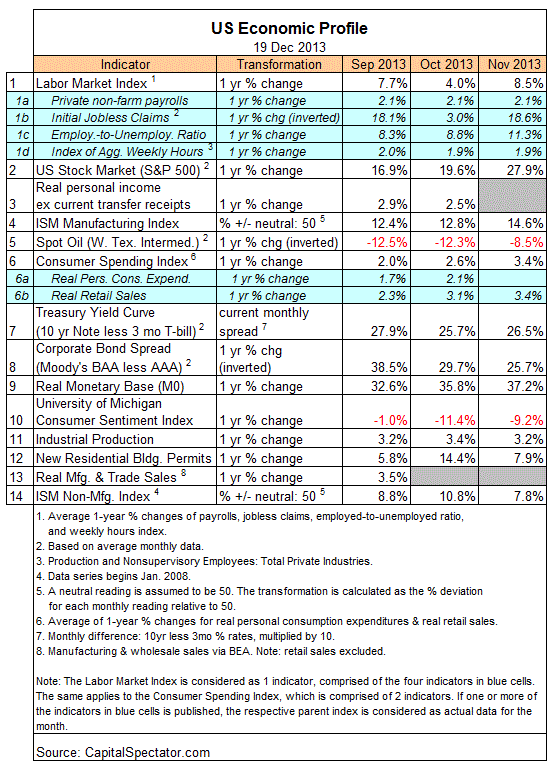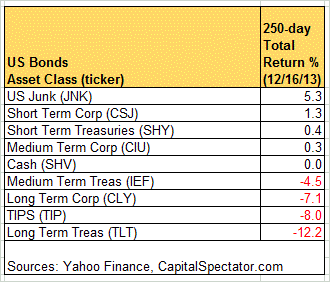The Economic Trend (ETI) and Momentum indexes (EMI) remain at levels that are well above their respective danger zones. Although ETI and EMI have pulled back lately, the declines follow historically high levels and so the mild retreats aren’t threatening at this point. Indeed, most of the indicators used to generate ETI and EMI continue to trend positive. The two exceptions: oil prices and consumer sentiment, although in both cases the negative comparisons have been easing lately. But there’s no mistaking the broad trend, which remains unambiguously positive. Recession risk has been minimal for some time, and remains so, according to the current profile of macro and financial data.
Here’s a closer look at the numbers in recent history via the ETI and EMI indicators:

Reviewing ETI and EMI in historical context shows that both benchmarks remain well above their respective danger zones: 50% for ETI and 0% for EMI. If one or both indexes fall below their respective tipping points, that would be a warning that recession risk is elevated.

Translating ETI’s historical values into recession-risk probabilities via a probit model also suggests that business cycle risk is low.

For some perspective on how ETI’s values may evolve as new data is published in the near future, let’s review projected values for this index with an econometric technique known as an autoregressive integrated moving average (ARIMA) model, based on calculations via the “forecast” package for R, a statistical software environment. The ARIMA model estimates the missing data points for each indicator, for each month through January 2014. (September 2013 is currently the latest month with a complete set of published data). Based on this projection, ETI is expected to remain well above its danger zone in the near term. Forecasts are always suspect, of course, but recent projections of ETI for the near term have proven to be relatively reliable guesstimates vs. the full set of monthly reported numbers that followed. As such, the latest projections (the four blue bars on the right in the chart below) offer some support for cautious optimism. For comparison, the chart below also includes ARIMA projections published on these pages in previous months, which you can compare with the complete monthly sets of actual data that followed, based on current data (red circles). The assumption here is that while any one forecast is likely to be wrong, the errors may cancel one another out to some degree by aggregating a broad set of forecasts.

For additional context for judging the value of the forecasts, here are previously published ETI and EMI updates for the last three months:
25 Nov 2013
21 Oct 2013
19 Sep 2013













